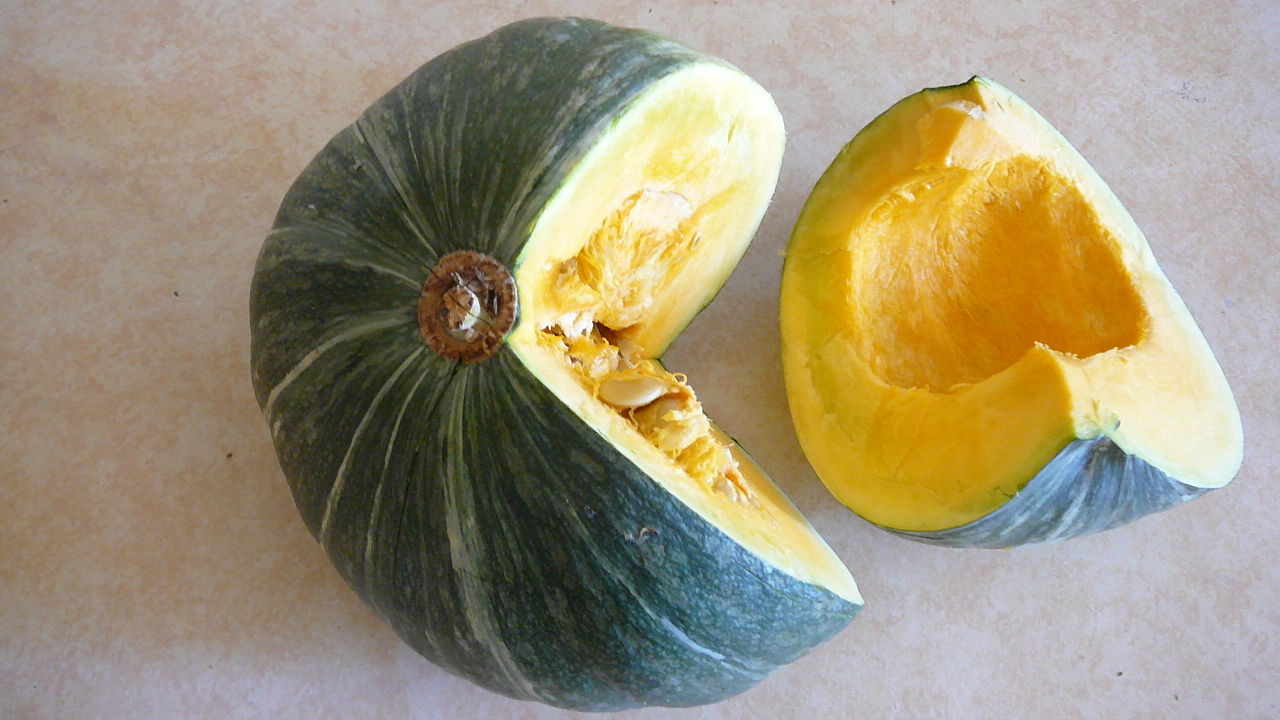By Kat Brown, Recent Arizona State University Nutrition Student
With fall creeping up around the corner, and hopefully double digit temperatures, it’s about to be the season of the pumpkin! Watch out because a new squash is in town. It is called kabocha and is often referred to as the Japanese pumpkin. This versatile veggie normally has a dark green skin but some varieties can also have an orange pumpkin-like skin and are a perfect medium size, usually ranging from 3 to 5 pounds. Slicing into this Asian squash you will see an orangey yellow color that makes for that perfect fall color palette when cooking.

Since they are normally available late summer to fall, if you plan on stocking up make sure that you store them in a cool dry spot. Over time the kabocha will sweeten and can be used to make wonderful holiday desserts. Kabocha is packed with benefits from the skin to the seeds. The squash itself is cfull of beta-carotene and iron, while the skin is loaded with fiber.
Beta-carotene
This antioxidant converts to vitamin A in the body and helps support a healthy immune system and good vision. Since vitamin A is a fat soluble vitamin it is important to monitor intake and not exceed the UL of 3,000 ug/day. When consuming b-carotene, the body only converts what it needs to vitamin A, making it a safe source of vitamin A to consume. B-carotene is also what provides the red-orange pigment in plants and fruits.
Iron
The recommended dietary allowance (RDA) for iron is 8mg/day for men and 18mg/day for women ages 19-50 years old. This mineral is used to make hemoglobin that allows your red blood cells to carry oxygen throughout the body. Iron deficiency can result in anemia and while it is not common in the United States when present it can have serious health consequences.
Fiber
Fiber is a crucial part of a healthy diet and consists of insoluble and soluble fiber. The skin of most winter squash consists mostly of insoluble fiber which means it does not dissolve in water. Studies show that people with higher fiber intakes have a reduced risk of heart disease, colon cancer, and gastrointestinal disorders. This is partially due to insoluble fibers ability to bind and remove carcinogens from the intestines.
Just like pumpkins, you can roast your kabocha seeds. The seeds provide omega 3 fatty acids which can provide many health benefits.
Here is my favorite seed recipe:
Ingredients:
3 cups kabocha squash seeds, cleaned and dried
1 Tbsp coconut oil
2 Tbsp sugar
1 tsp cinnamon
1 tsp chili powder
1 tsp sea salt
Method:
Preheat oven to 180
Toss seeds with oil.
Combine sugar (if using) and spices and toss with seeds, coating evenly.
On parchment-lined cookie sheets, place seeds in a single layer.
Roast 20-30 minutes, stirring occasionally and checking for doneness.
The good news: kabocha does great in drier climates! Many types of squash are available year round in Arizona, so no matter what, you can always find delicious and local squash near you! Visit Fill Your Plate to do just that, and find local growers of squash and other fruits and veggies!

